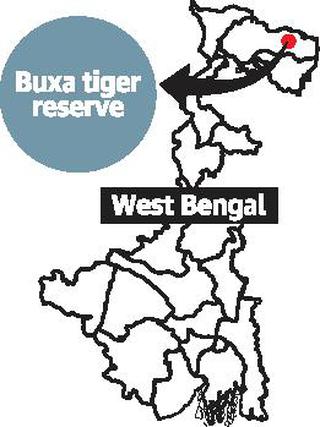Why in news?
Recently National Tiger Conservation Authorityidentified Buxa tiger reserve in West Bengalfor the tiger augmentation programme.
What is the significance of Buxa tiger reserve?
- It has notified as a tiger reserve in 1983, located in Alipurduar district of West Bengal, parts of which border Bhutan.
- The reserve is located very close to Assam’s Manas Tiger Reserve.
- Buxa consists of moist, deciduous and evergreen forests.
- It is home to at least 68 species of mammals, 41 species of reptiles and more than 246 species of birds, four species of amphibians, 73 species of fishes and over a hundred species of butterflies and moths.
- The herbivore list includes elephants, Indian gaur, chital, sambars, barking deer and hog deer.

How the augmentation program will be done?
- Forest Department officials claimed there were tigers in the reserve, almost no sighting of the big cats raised questions about their presence.
- The survey of tigers in 2011 based on DNA analyses of scat put the number of tigers at 20.
- The initial plan is to introduce six tigers at Buxa.
- Experts have consciously decided not to augment tigers in the Buxa reserve from the Sunderbans, a completely different mangrove ecosystem.
- Instead, tigers from the forest reserves of Assam, which have a similar flora and fauna, will be introduced in Buxa.
- Experts believes that tigers are migrating from nearer Manas wildlife sanctuary through Buxa-Bhutan corridor.
What are the challenges?
- The introduction of tigers is a challenge to forest officials as there is human habitation in the area.
- There are also common clouded leopards, jungle cats and fishing cats, which occasionally surface in the tea gardens nearby.
- Chances of wild animals getting killed while crossing the tracks are high, as broad gauge rail line is passing through the reserve.
- Tourist accommodationsrun by both the forest department and private operators, in the reserve possess high threat to tiger habitat.
Source: The Hindu